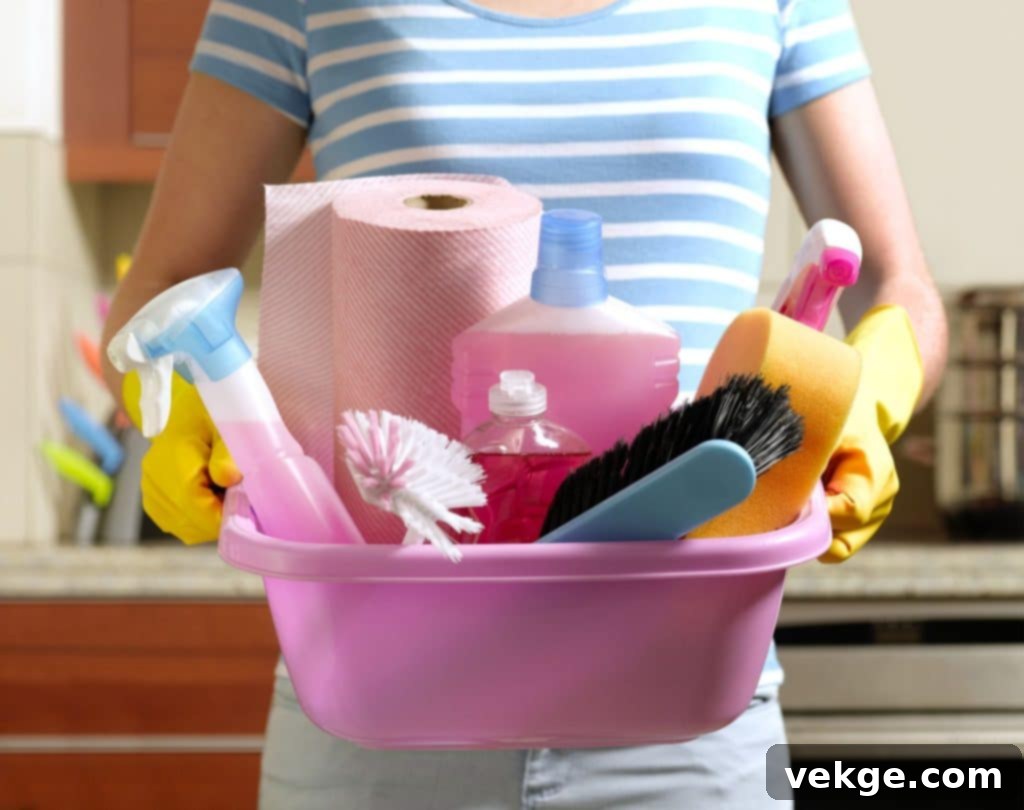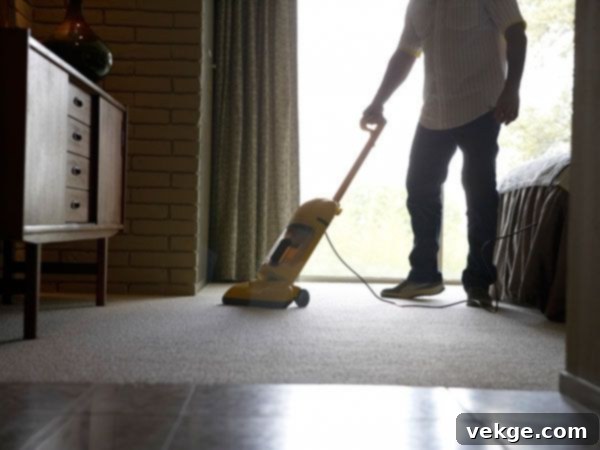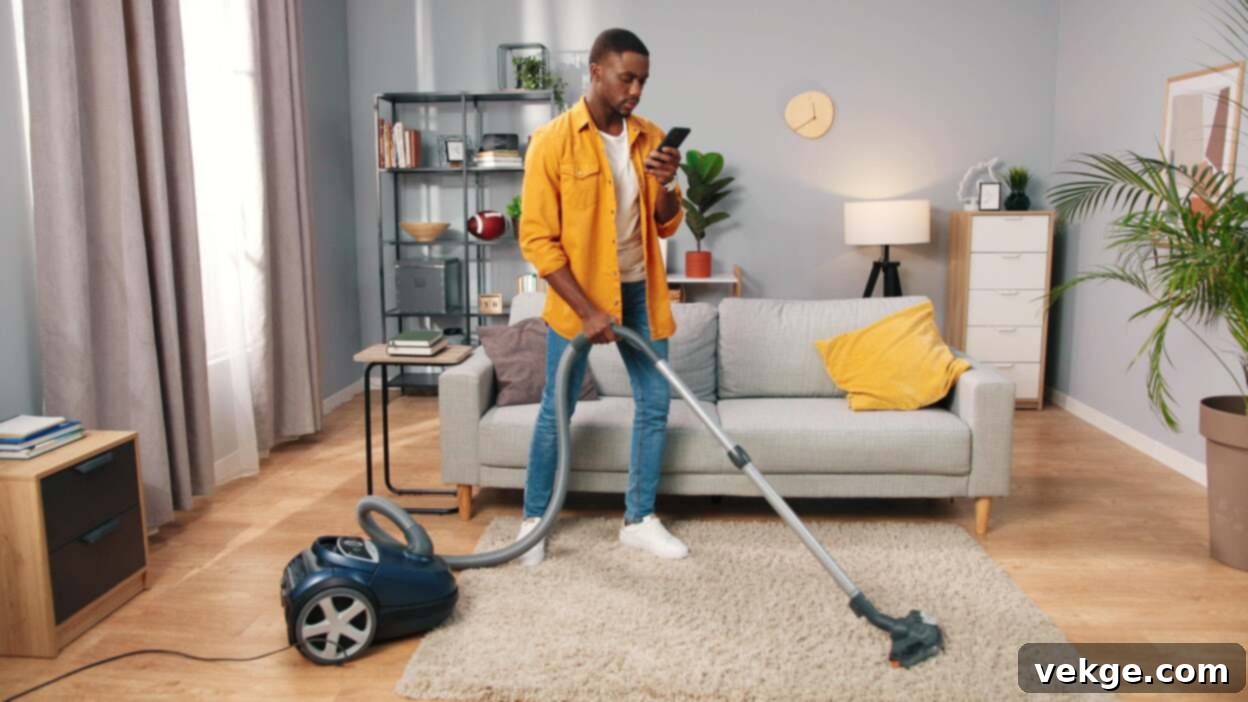The Ultimate Guide to Efficient Home Cleaning: Strategies for a Faster, Spotless Home
Cleaning can often feel like an overwhelming chore, consuming precious time and energy with endless wiping, scrubbing, and organizing. Many people dread cleaning day, seeing it as a necessary evil rather than a manageable task. However, by implementing effective strategies and utilizing the right tools, you can transform this daunting process into an efficient and even satisfying routine. This comprehensive guide will help you understand how to clean your home efficiently, recognize the subtle signs that indicate an overdue cleanup, and provide actionable steps to maintain a pristine living space with minimal effort. Imagine reclaiming your weekends and enjoying a consistently fresh and inviting home; it’s entirely achievable with a smarter approach to cleaning.
How to Identify If Your House Needs More Cleaning

It’s perfectly normal for a house to get a little messy; life happens, and perfection is an unrealistic expectation. You don’t need to stress yourself into a daily, meticulous cleaning routine, striving for a completely organized and germ-free environment at all times. However, there comes a point when a lack of cleaning begins to impact your household’s physical comfort, mental well-being, and even health. Recognizing these indicators can help you decide when it’s time for a more thorough clean, ensuring your home remains a sanctuary rather than a source of stress.
- Constant Unpleasant Odors: If you find yourself consistently trying to mask persistent, pungent odors with scented candles, air fresheners, or diffusers, it’s a glaring sign that your house needs a deep clean. These lingering smells often originate from hidden spills, pet accidents, neglected garbage, damp areas, or stale air trapped in carpets and upholstery. Simply covering them up won’t address the root cause, which can often be a breeding ground for bacteria or mold. A thorough cleaning will identify and eliminate these sources, leaving your home genuinely fresh.
- Increased Allergy Symptoms: Do you or a family member experience more frequent or severe allergy symptoms when at home compared to when you’re out? This could be directly linked to an accumulation of dust, dirt, pet dander, and pollen within your living space. These common allergens settle on surfaces, in carpets, and circulate through the air. Regular cleaning, especially dusting and vacuuming with a HEPA filter, significantly reduces these irritants, leading to improved respiratory health and overall comfort for allergy sufferers.
- Visible Mold Growth: Mold is not just unsightly; it can be a significant health hazard, potentially leading to or exacerbating asthma, allergies, and other respiratory issues. Regularly inspect areas prone to moisture, such as kitchen countertops, window sills, bathroom walls, shower curtains, and even under sinks. If you spot any greenish-black or white fuzzy patches, it’s a clear signal that your home requires immediate attention. Addressing mold promptly is crucial for preventing its spread and safeguarding your family’s health. You can find more information about mold and its health effects here.
- Pest Infestations: The presence of rodents, ants, cockroaches, or other small insects is a strong indicator that your home might be providing an inviting environment for them. Pests are typically attracted to accessible food sources, waste, and clutter, which offer shelter and breeding grounds. Their droppings, urine, and even their mere presence can contaminate food, spread diseases, and pose various health risks to your entire family. A clean, clutter-free home with proper waste management is the best defense against unwanted visitors, making it less appealing for them to settle in.
How to Clean Your Home Efficiently

Once you’ve determined that your home is due for a thorough cleaning, the next step is to tackle it effectively. These optimal strategies are designed to help you reduce the time and effort it takes to clean your home, making the process much more manageable and productive. By adopting a systematic approach, you can achieve a sparkling clean home without feeling overwhelmed.
Declutter Before Dusting
One of the most impactful steps you can take to streamline your cleaning process is to declutter before you even think about dusting or wiping. A cluttered surface not only traps dust but also makes cleaning around items tedious and inefficient. Start by addressing notorious clutter hotspots like entryway tables, coffee tables, kitchen counters, and the cabinet under the bathroom sink. Removing unnecessary items immediately makes your home appear tidier and creates clear surfaces for cleaning. This initial decluttering also provides a crucial sense of accomplishment, boosting your motivation to proceed with the deeper cleaning tasks.
After you’ve identified items to remove, categorize them into “donate,” “organize,” or “dispose.” For items you wish to keep but don’t belong in the immediate area, find a designated home. If you have potentially toxic or infrequently used items like propane tanks, paint cans, or old tools, secure them safely in your garage. Maximize your garage’s potential by utilizing vertical storage solutions, clear containers, and clearly labeled shelves. This not only keeps hazardous materials out of the main living space but also creates a more organized and functional garage, as discussed in tips for maximizing available space.
Clean from Top to Bottom, Left to Right
Cleaning with a strategic plan is key to efficiency. By implementing your cleaning strategies in a consistent order every time, you eliminate wasted time running back and forth and re-cleaning areas. The most effective approach is to clean from top to bottom and then from left to right within each room. This method leverages gravity, ensuring that any dust, dirt, or debris that falls during cleaning lands on surfaces that haven’t been cleaned yet. For example, begin by dusting ceiling fans, light fixtures, and high shelves. Then move down to windows, mirrors, countertops, and finally, floors.
Similarly, working from left to right across a room prevents you from missing spots or re-contaminating areas you’ve just cleaned. Imagine cleaning one side of a room, then moving to the other, only to accidentally track dirt back. A methodical approach ensures every surface is addressed systematically, saving you time and effort in the long run. Consistency in this method also helps develop a cleaning rhythm, making the entire process feel more intuitive and less like a chaotic scramble.
Gather the Right Cleaners and Tools
Before you begin any serious cleaning, gather all your necessary supplies and keep them within easy reach. This simple step prevents countless trips back and forth to your supply cabinet, saving significant time and maintaining your cleaning momentum. Having the right tools for the job also ensures that tasks are completed effectively and efficiently. Here are some bare essentials to stock in your cleaning caddy:
- Vacuum Cleaner: An absolute must for eliminating dirt, dust, crumbs, and pet fur from various floor types, including carpets, rugs, and hard surfaces. Consider a model with versatile attachments to reach crevices, upholstery, and high corners.
- Sponges: Invest in a pack of quality sponges. Dedicate separate sponges for the kitchen sink and countertops, and another set for bathroom walls and fixtures. Look for sponges with an abrasive side to quickly tackle tougher grime and dried-on messes. Remember to replace them regularly to avoid spreading bacteria.
- Scrub Brushes: For stubborn dirt and grime on tile grout, shower walls, and floors, a good scrubbing action is indispensable. Different brushes exist for various needs; consider a stiff-bristled brush for floors and a smaller, specialized grout brush. Crucially, always assign a separate, distinct brush for your bathroom to prevent cross-contamination.
- Spray Bottles: These are incredibly versatile. Fill them with water for rinsing, your favorite all-purpose cleaning solutions, or even DIY natural cleaners like diluted vinegar. Labeling them clearly will save time and prevent mishaps.
- Specialized Cleaners: Different surfaces and stains require different cleaning agents.
- Acidic Cleaners: Water-based cleaners with a pH scale up to seven (like vinegar-based solutions or specific bathroom cleaners) are excellent for tackling rust, soap scum, and hard water deposits. These are ideal for toilet bowls, shower doors, and sinks.
- Alkaline Cleaners: Cleaners on the alkaline side of the pH scale (above seven, like oven cleaners or degreasers) are better suited for cutting through oils, greases, and waxes, making them perfect for kitchen surfaces and stubborn stove top stains.
- Glass Cleaner: Essential for streak-free windows and mirrors.
- Wood Cleaner: Specific formulations designed to protect and shine wood surfaces without damage.
- Disinfectant: Crucial for eliminating bacteria and viruses from germ-prone, high-touch areas. Ensure you allow disinfectants to sit on surfaces for the recommended “dwell time” (usually a few minutes) to be effective before wiping.
- Duster: A good duster, whether it’s a microfiber duster, an electrostatic duster, or an extendable feather duster, is essential for swiping dust from blinds, tabletops, mantles, and electronics.
- Microfiber Cloths: These are superior to paper towels for most cleaning tasks as they effectively trap dust and dirt without leaving lint or streaks. Use different colored cloths for different areas (e.g., blue for glass, green for kitchen, yellow for bathroom) to prevent cross-contamination.
- Bucket and Gloves: A sturdy bucket is useful for mixing solutions or carrying water, and protective gloves are a must for safeguarding your hands from harsh chemicals and dirt.
Start Cleaning the Most Daunting Room

Psychologically, tackling the messiest or most challenging part of your home first can be incredibly motivating. Getting the most arduous tasks out of the way early gives you momentum and makes the rest of the cleaning process feel much easier. For many, this often means the kitchen or the bathroom.
If your kitchen is the most disorganized or dirtiest, start there. Begin by decluttering countertops, then wipe down cabinets, the stovetop, and the kitchen table. For stubborn grease on stainless steel appliances like microwaves or refrigerators, a clever trick is to briefly microwave a damp microfiber cloth for 30-60 seconds. The steam will loosen grime, allowing you to wipe away grease without leaving streaks, as suggested by experts on cleaning houses fast. Don’t forget to clean inside the microwave and the oven. Pay special attention to the sink and faucet area, which can harbor many germs.
After conquering the kitchen, move on to the bathrooms. If you have multiple bathrooms, start with the largest or most heavily used one. Apply an all-purpose bathroom cleaner to the toilet bowl, sink, tub, and countertops. Let the solution sit for a few minutes to break down soap scum, grime, and mold while you empty trash cans, replenish toilet paper, and tidy up towels. Once the cleaner has had time to work, scrub thoroughly and rinse, then wipe surfaces dry to prevent water spots.
Disinfect High-Touch Surfaces
As you approach the final stages of your cleaning process, it’s crucial to focus on disinfecting high-touch surfaces. These are the areas that hands frequently come into contact with, making them prime spots for germ transmission. Common examples include doorknobs, light switches, toilet handles, faucet handles, remote controls, phone screens, keyboards, appliance handles (refrigerator, oven, microwave), and cupboard pulls. Use a surface disinfectant spray or wipes, ensuring the surface remains wet for the product’s recommended “dwell time” to effectively kill bacteria and viruses.
For electronic devices like remote controls, tablets, and keyboards, consider using specialized electronic wipes or a microfiber cloth lightly dampened with a cleaning solution specifically designed for electronics. Another practical tip is to use wipeable covers or cases for these devices to make their regular tidying up much easier and more effective, protecting them while maintaining hygiene.
Tackle the Floors Last
Always finish your cleaning routine by addressing the floors. This ensures that any dust, debris, or spills that have fallen from higher surfaces during your cleaning efforts are captured and removed. Begin by thoroughly vacuuming all carpets, rugs, and hard floors. For hard surfaces, follow up with mopping.
- Tiled Flooring: A string mop is excellent for reaching harder-to-reach grout lines, while a flat-head mop with a microfiber pad works well for general tile surfaces. Use a cleaning solution appropriate for tiles to prevent streaks and maintain shine.
- Wooden Floorboards: Opt for a flat-head mop with a microfiber pad or a specific wood floor cleaning machine. It’s vital to avoid using harsh chemicals like bleach or undiluted vinegar, as these can damage the finish of wood floors over time. Instead, always choose a cleaning product specifically formulated for wood floors to ensure gentle yet effective cleaning and preserve their natural beauty.
- Carpets: Beyond regular vacuuming, consider periodic deep cleaning with a carpet cleaner or hiring professionals, especially if you have pets or high foot traffic.
Enjoy a Clean, Peaceful Home
While deep cleaning sessions are important, the secret to an effortlessly clean home lies in consistency. By incorporating simple organizing and cleaning chores into your daily or weekly routine, you can significantly cut down on the time required for major cleaning sessions in the long run. Wiping down counters after use, putting things away immediately, and addressing small messes as they happen prevents dirt and clutter from accumulating. Maintaining an organized home not only results in a healthier and more relaxing environment for everyone but also reduces stress and improves your overall quality of life. Embrace these efficient cleaning strategies, and you’ll soon find yourself enjoying a consistently spotless and peaceful sanctuary.
Author Bio
Jack Shaw is a freelance writer who has spent the last five years writing about how to improve your home and health. He serves as senior writer for Modded, and since then has contributed to Better Triathlete, Log Cabin Hub and Hella Life among many other publications. When not writing, he can often be found working on his own home or simply playing with his dog.
